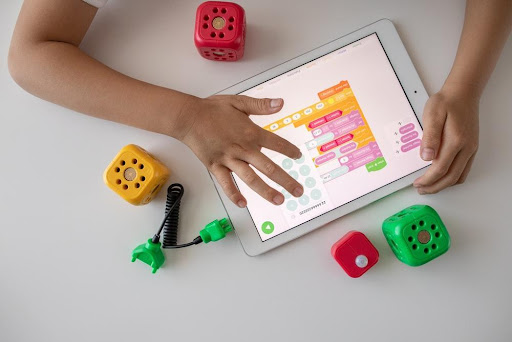Today, children use digital devices for entertainment and learning. It is estimated that kids spend 3 hours daily on mobile devices. Thus, app designers greatly influence the content and design of mobile apps. Even though the children are not direct purchasers of the app, they represent a huge market section. Thus, the kids’ mobile app industry is quite profitable, with a predicted market size of over $46 billion by 2023.
Technological advances allow children to play games or access educational materials through smartphones. Why not create apps that influence the kids positively? Developers are tasked to develop impressive apps that offer entertainment and encourage children’s brain development.
To build a custom app for kids, you can hire a reputable UX agency to help you develop a stellar product. But it is essential to understand the intricacies of mobile app development. This article offers an in-depth guide on the aspects you must consider when building mobile apps for kids.
Fundamental Considerations When Building an App
It is, without a doubt, the first thing you must do. You might need a helping hand to kick off
your business, even though you can star
Let us explore the essential factors you must consider when building an app for children. Unlike adult apps, kids’ applications must be well-planned to develop effective products.
Target Market
It would help if you took adequate time when identifying a suitable target audience. Preschool children will not be fascinated with an app designed for 10-year-old kids. You must be age-specific about the apps you want to build to suit the users’ needs.
Developers must also factor in children’s behavior at certain age groups before releasing apps to the market. Understanding the target audience for kids will help determine the design elements and app content.
App Purpose
What do you aim to achieve after launching the app? Having a great app idea is one thing, but understanding the main purpose of your app is crucial. Your application needs to serve the intended purpose that suits the audience. Otherwise, your app will flop, and you will lose your investments.
Thus, be clear when writing down your app’s purpose and the market gaps it will fill. Defining the motive for downloading the app will guide the development process in the right direction.
Consider the Parents/Guardians
You might have a brilliant app idea for kids, but it will fail if the parents don’t approve. The parents or guardians are the sole decision-makers about your app’s adoption by their children. They will abandon the app immediately if it is not up to standard with the right content. Thus, you should always study the parents’ mindset regarding mobile apps.
t writing yourself if you are good at it. Still, it is better
to hire at least one individual in the beginning. You can build a whole team of skilled writers
later, but having one good writer at the beginning will do the job.
For this purpose, you need to look up freelancing websites online. These websites enlist
information about the writer, rank them according to popularity, and even have a comment
section where different people share their views. In this way, it will be easy for you to find a
talented, trustworthy writer.
Critical Aspects of Mobile App Design for Kids
As mentioned above, designing apps for children is different for adults. You must research and ensure the app is a great fit for your intended audience. One essential aspect is the user interface since it plays a major role in an app’s success. Thus, ensure you make your UI simple to avoid user complications and enhance usability.
Here are critical aspects you need to consider for kids’ applications.
UI/UX Design
It is essential to understand that the user interfaces for children are different compared to an adult audience. That is why it is imperative to factor in the age groups of your target users. Teenagers need a responsive and engaging user interface, while preschool kids are more about vibrancy. Hence, during the design phase, ensure the developers understand the psychology behind each graphical element, not forgetting to add the latest design trends.
Younger kids are more visual, so they get attracted to bright colors and vibrant images. So, the designers should incorporate multi-colored elements to capture a child’s interest. Avoid dull colors and sophisticated designs that will bore the kids.

Adaptability
You need to develop an app that allows easy adaptability. The children need to adapt to the UI within a short time. Apps with complex interfaces fail early after the launch. Most children don’t have the patience to use a difficult app. Kids will abandon it and use another app that serves their needs.
Robustness
Mobile apps for kids must be reliable and stable enough to withstand development issues. Kids will not use an app that breaks down and leaves them hanging in the middle of the game. The children don’t’ understand how to deal with a crashed app, so never allow amateur developers to build your app.
Once installed on the device, the app should run smoothly until the parents opt for other options. Otherwise, the software issues will compromise your brand’s reputation, and you might fail in the market.
Ease of Use
Don’t forget that you are designing for children who are not as tech-savvy as adults. So, you must build apps with high usability and easy navigation. Use simple English and visual prompts to avoid stressing the children.
Apps that are easy to use make learning more efficient and enjoyable. Kids will retain more information and develop their mental skills through interactive games.
User Engagement
What makes a children’s app more engaging? The developer needs to ask this single question before embarking on the development. Build a unique and appealing app to capture the minds of kids. Avoid the boring education-style app if you want to increase engagement. Today, gamification is a rising trend that is used to enhance learning. You can introduce games and encourage kids to gain information. Apart from playing fun games, the kids get to learn with a high retention capacity. Introducing games in apps will improve your app’s popularity, and you will gain loyal customers.
Final Words
Knowing how to design the UI is a game-changer for many developers. Building an app for kids is not an easy task. UI/UX design must be easy to use and appealing to the kids and parents.
So, you should have an effective plan with vital aspects to add to the app. Remember, a simple and usable app is better than a sophisticated one. Simplicity and vibrancy are fundamental in capturing the interest of kids. Use the best tools to develop a stellar product to influence children positively.






